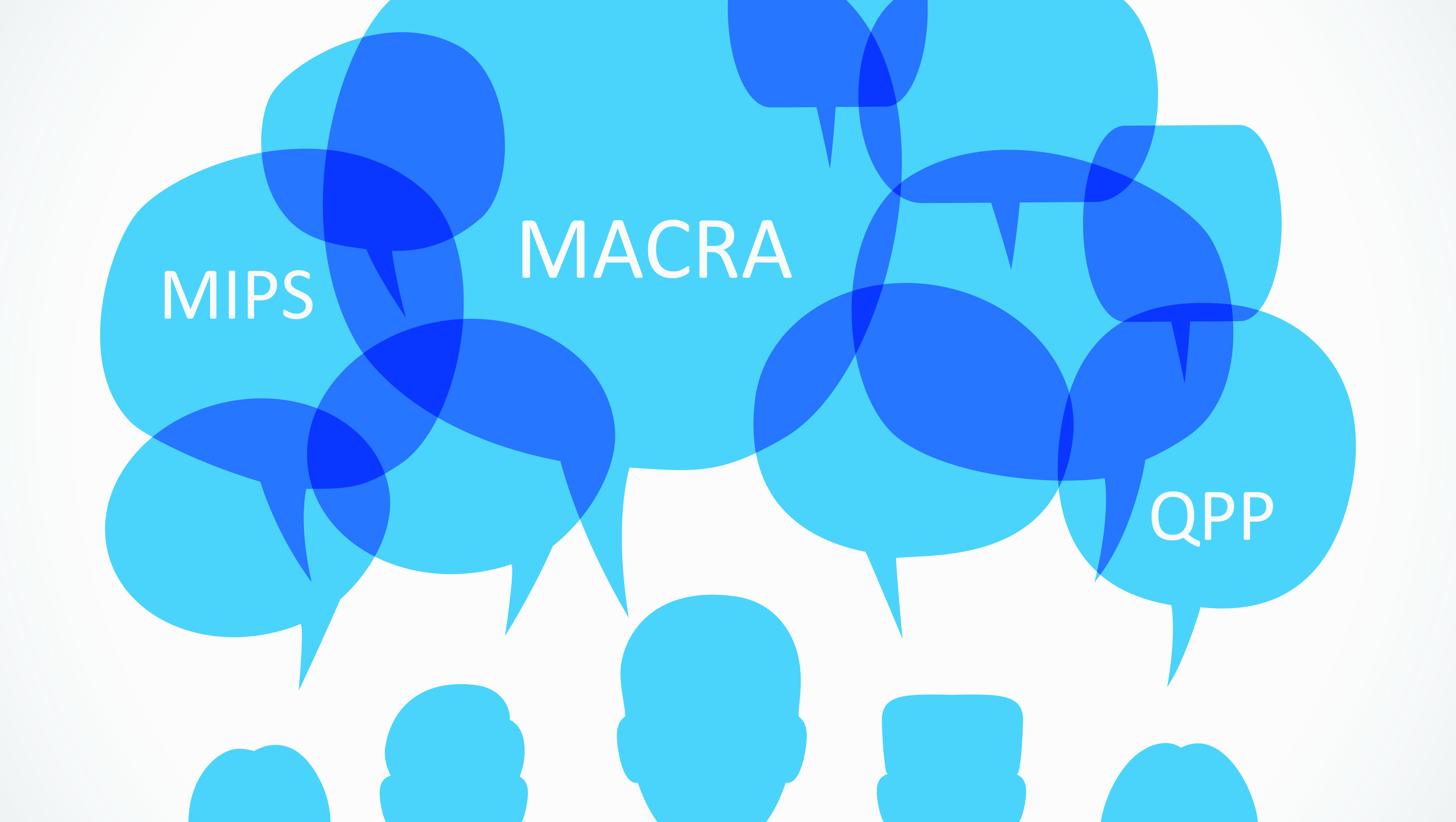With the publication of the Medicare Physician Fee Schedule (MPFS) Final Rule for 2019, which includes the Quality Payment Program (QPP) Final Rule, we can now review how radiologists can prepare to maximize their 2021 Medicare reimbursement through QPP participation in 2019. The QPP includes both the Medicare Incentive-based Payment System (MIPS) and Alternative Payment Model (APM) tracks. Since most radiology groups are currently participating in MIPS, we will focus on steps to take for successful participation in this program.
Review of The Medicare Quality Payment Program for 2019 on November 19, 2018
Categories: MPFS, MIPS, Quality Payment Program, radiology, QPP, APM
How Can Your Radiology Practice Maximize Its MIPS Score? on August 23, 2018
With the 2017 MIPS reporting year behind us, we now know that practices that achieved the highest possible Final Score of 100 points will receive 2.02% more Medicare reimbursement than the basic fee schedule for 2019. This increase is compared with the possibility of a 4% payment reduction for practices that did nothing, and a zero-percent adjustment for practices that did the minimum amount of reporting. In between the minimum level and a perfect score, the fee schedule positive adjustment varies on a sliding scale computed by Medicare.
Categories: MIPS, MIPS participation, radiology
What Does APM Participation Mean for a Radiology Practice? on May 31, 2018
In our recent article we explored the ways radiology groups can begin to move toward participation in Alternative Payment Models (APM*) as an option in place of working within MIPS under the Medicare QPP. But what does APM participation mean for a radiology practice, and what should radiologists look for to begin moving in this direction?
Categories: MIPS, Quality Payment Program, MIPS participation, radiology, QPP, APM, Advanced Payment Model
2018 Budget Bill Makes Changes to MIPS on April 6, 2018
When Congress finalized the fiscal 2017 federal budget on February 9, 2018, the bill1 contained some changes that will affect the Medicare Quality Payment Program (QPP) in the coming years. Nothing in the bill changes Medicare payment levels or the MIPS2 reporting requirements for 2018. There is, however, a change that affects the 2018 performance year low-volume exclusion.
Here is a summary of the changes:
Categories: MIPS, Quality Payment Program, MIPS participation, QPP
How Important Is The MIPS Cost Category to Radiology Practices? on March 8, 2018
The Centers for Medicare and Medicaid Services (CMS) threw a surprise into the Quality Payment Program (QPP) Final Rule for 2018 when it included the Cost Category as 10% of the MIPS Final Score for 2018 reporting. The QPP Proposed Rule issued a few months earlier stated that Cost would be zero-weighted for 2018 as it had been in 2017. So what does this mean for radiology?
Categories: MIPS, Quality Payment Program, MIPS participation, radiology, QPP
MIPS Rules Changes For 2018: What Radiology Practices Need To Know on January 23, 2018
The first performance measurement year of the Medicare Incentive-based Payment System (MIPS) was 2017, the results of which will be used to determine Medicare payment adjustments in 2019. This was considered a “transition year” that allowed practices to “pick your pace,” ranging from a streamlined path that would simply avoid penalties in 2019 to full participation that could generate positive payment adjustments in 2019. The bar has been raised for 2018 performance measurement, and it will continue to be raised again in 2019 as the program reaches full implementation as required by law. This article summarizes the changes for 2018 that will affect the performance of radiology practices as they work to maximize their reimbursement in 2020.
Categories: MIPS, MIPS participation, radiology
Is a Virtual Group an Option for Radiologists Reporting MIPS? on November 20, 2017
Physicians participating in Medicare’s Merit-based Incentive Payment System (MIPS) have the option of reporting data for 2018 as an individual Eligible Clinician (EC), as part of a group practice that bills Medicare using the same Taxpayer ID Number (TIN), or as part of a Virtual Group. The latter option is available to a group with 10 or fewer ECs, or an EC in solo practice, who might want to join forces with at least one or more similarly-sized practices for the purpose of reporting their MIPS data for a performance year. A solo practitioner participating under two TINs may even form a virtual group across both practices.
Categories: MIPS, MIPS participation, radiology, virtual groups
Radiology Leaders Comment on the Realities of the QPP on November 3, 2017
As MACRA heads down the homestretch of its first implementation year, providers across all specialties are assessing the status of their practice and looking for guidance as to what the future holds. Understandably, concern and confusion remain. While most major players involved in healthcare delivery agree with the move to value-based compensation conceptually, the constant evolution of what is now the Quality Payment Program (QPP) has in many ways created more questions than it has answered. Specialty physician practices looking for certainties amidst the complexities should focus on this important factor: value-based payment models, in theory, have bi-partisan support. This is not expected to change despite the continuing ACA debate in Congress. Implementation delays and grace periods may indeed make it into ongoing legislation. However, proactive physician practices are realizing that the wait-and-see era is over. Maximizing reimbursements in the QPP in the years to come requires planning and implementing a compliance program right now.
Categories: MIPS, MACRA, MIPS participation, radiology
It’s Not Too Early to Prepare for a MIPS Performance Data Audit on September 15, 2017
Beginning in 2019 the level of reimbursement from Medicare to many physicians will be determined in part by their performance in the Merit-based Incentive Payment System (MIPS). Medicare will award a higher level of payment to those eligible clinicians and groups who report that they have successfully met certain criteria for Quality, Advancing Care Information, and clinical practice Improvement Activities. MIPS is the successor program to the Physician Quality Reporting System (PQRS) and Meaningful Use of Electronic Health Records (MU-EHR) incentive programs, and CMS (the Centers for Medicare and Medicaid Services) has indicated that it will continue its practice of auditing the data submitted by practices just as they did under the earlier programs. As this article in Healthcare IT News illustrates, the result of failing an audit will be non-payment of expected incentives (in the case of a pre-payment audit) or returning of funds already paid and possibly even federal sanctions depending on the severity of the infraction.
Categories: MIPS, Quality Payment Program, MIPS participation, radiology, quality measures
Exceptions and Exemptions from MIPS Reporting for 2017: What Radiologists Need to Know on August 21, 2017
In the August 4, 2017 edition of its Advocacy in Action eNews the American College of Radiology (ACR) reported on the Centers for Medicare and Medicaid Services (CMS) announcement regarding the manual application process for a significant hardship exception under the Advancing Care Information (ACI) category of MIPS.
Categories: MIPS, MIPS participation, radiology













